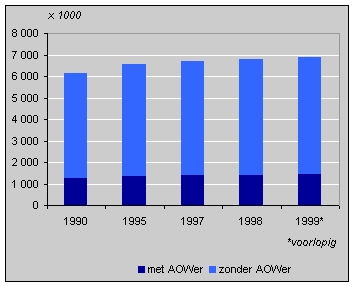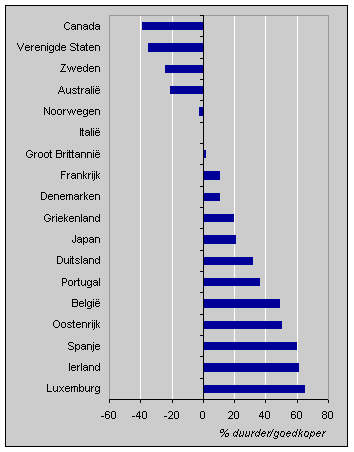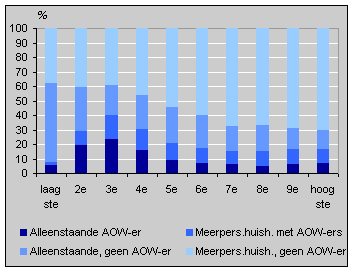One in five households receive old age pensions (AOW)

By late 1999 one in five private households included at least one recipient of a pension under the Old Age Pension Act (commonly known as AOW). For 2% of these AOW-households the AOW was their only source of income. Four AOW-households received an extra pension supplement, more than half had income from capital and over a quarter received a rent subsidy.
Supplementary income makes that pensioners have considerably greater financial possibilities that the amount of AOW alone would provide. Single AOW-recipients in 1999 had about more than one-and-a-half times the amount paid by the AOW to spend. For AOW couples spendable income was nearly twice the AOW amount.
Households with and without pensioners receiving AOW

With 42 400 guilderss (19 200 euro) the spendable income of AOW-households was nearly 20% below the average income of all households. Pensioners on AOW generally live in smaller households, with fewer people depending on that income. Therefore the prosperity level of AOW households was only 5% below average in 1999.
Gross income components in AOW-households, 1999 (preliminary figure)

When Dutch households are categorised according to income level, and then divide them into 10 same-size classes we see that the AOW-pensioners are represented relatively often in the lower income classes. One in four households found within the bottom five 10% classes was an AOW household. In the five highest 10% classes this was one in six. There are very few AOW households in the bottom 10% group, which mainly consists of students and self-employed people working with a low profit or loss.
In 1999 the purchasing power of AOW-households increased by an average of 0.5%, far less than the general average purchasing power increase of 1.3% for 1999.
Private households per 10%-group of standardised spendable income, 1999 (preliminary figure)

Clemens Siermann